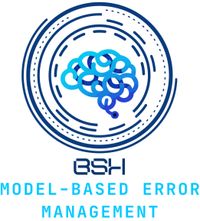Deloitte Scandal: From Failure to Precision — How Model-Based Error Management Safeguards AI-Driven Reports
The recent case involving Deloitte in Australia illustrates a critical lesson: relying on AI-generated content without rigorous quality controls is playing with fire. The solution lies not in slowing down AI, but in strengthening the system around it.
It was a cautionary tale for any organization working with artificial intelligence. Deloitte was forced to withdraw a report produced for an Australian government agency because the AI-generated document contained serious inaccuracies, including fabricated quotations and invented references. The result: the report had to be corrected and reissued—damaging credibility and undermining confidence in AI-assisted analysis.
This incident is not an isolated mishap. It reflects a structural problem: many organizations deploy AI tools without establishing a robust framework that ensures the quality, validity, and integrity of the outputs. The very speed and scalability that make AI powerful can turn into liabilities when not properly governed.
The Solution: Don’t Slow Down AI
Accelerate the Management Around It
This is where our model-based error management approach comes in. The goal is not to criticize or restrict the use of advanced AI systems. On the contrary: it is to create a controlled environment in which these technologies can operate at full potential—reliably, transparently, and safely.
Model-based error management means systematically identifying, modeling, and proactively mitigating potential sources of error in AI-driven processes. Instead of relying on after-the-fact corrections—as in the Deloitte case—we focus on preventive safeguards.
What Does This Look Like in Practice?
1. Comprehensive process modeling:
We build models that document every step of AI-supported content creation—from data input and prompt design to the final output.
2. Early identification of risk factors:
Even before a report is written, we model potential error sources: AI hallucinations, outdated data, loss of context, or domain inconsistencies.
3. Integrated automated and human checkpoints:
Rather than manually reviewing every sentence, the system adds validation layers aligned with the predefined error model.
4. Continuous learning through feedback loops:
Every error identified feeds back into the model, making the system smarter and more resilient with each iteration.
The Result: Trust and Quality Instead of Hallucinations
The Deloitte episode serves as a clear warning. But it does not have to be an inevitable part of AI transformation. With a systematic, model-based approach to error management, AI outputs become not only faster—but reliably accurate and professionally validated.
Are your AI-enabled processes protected against these kinds of risks?
